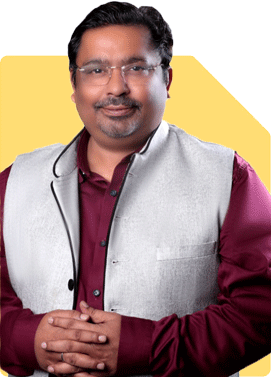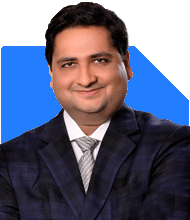Sir, I am 30 years now. I have started my Mutual fund in July 2024 portfolio by investing in several mutual funds. I am investing for long term gain and to accumulate a corpus or min. 2 Cr in other 30 years. Please advice if i can continue my investing. Here are my investments -
1. Index Fund - UTI Nifty 50 Index Fund Growth - 3000
2. Large Cap Fund - ICICI Prudential Bluechip Fund Direct Growth - 2000
3. Midcap Fund - HDFC Mid-Cap Opportunities Fund - 1500
4. Small Cap Fund - Nippon India Small Cap Fund - 1500
5. Flexi Cap Fund - Parag Parikh Flexi Cap Fund Direct Growth - 2000
Please advise sir
Ans: At 30 years of age, your decision to start investing in mutual funds is commendable. Your goal of accumulating a corpus of Rs 2 crore over the next 30 years is achievable with disciplined investing.
However, it is important to regularly review and align your portfolio with your financial objectives. This ensures that your investments remain on track towards achieving your desired goals.
Evaluating Your Current Portfolio
Your portfolio consists of a mix of index funds, large-cap, mid-cap, small-cap, and flexi-cap funds. Let’s assess the pros and cons of each and see how they contribute to your long-term goal:
1. Index Fund (UTI Nifty 50 Index Fund Growth)
Disadvantages of Index Funds: While index funds offer low-cost exposure to the market, they may not outperform actively managed funds over the long term. Index funds simply mimic the market index and do not have the flexibility to adapt to changing market conditions. In times of market downturns, index funds can also suffer significant declines without the ability to cushion losses.
Benefits of Actively Managed Funds: Actively managed funds, on the other hand, offer the potential for higher returns as they are managed by experienced fund managers who can make strategic decisions based on market trends. These managers aim to outperform the benchmark index, giving you the potential for better returns in the long run.
2. Large Cap Fund (ICICI Prudential Bluechip Fund Direct Growth)
Large Cap Exposure: Large-cap funds are known for their stability and lower risk compared to mid and small-cap funds. They invest in well-established companies with a strong track record. However, the "Direct" plan of this fund means you are investing without the guidance of a Certified Financial Planner (CFP) or Mutual Fund Distributor (MFD).
Disadvantages of Direct Plans: Direct plans require investors to be more hands-on, with regular monitoring and decision-making. Many investors might miss out on timely advice, leading to missed opportunities or increased risks. Regular plans, through a CFP or MFD, ensure that you receive professional guidance, helping you make informed decisions aligned with your goals.
3. Midcap Fund (HDFC Mid-Cap Opportunities Fund)
Growth Potential: Midcap funds offer a balance between risk and reward. They invest in companies with the potential for high growth. However, they can be volatile, especially during market downturns. It's essential to have a longer investment horizon for mid-cap funds, as you do, to ride out the volatility and capture long-term growth.
4. Small Cap Fund (Nippon India Small Cap Fund)
High Risk, High Reward: Small-cap funds invest in emerging companies with high growth potential. However, they are also the most volatile and carry higher risk. These funds can experience significant fluctuations in short periods. While they can generate substantial returns, it's important to balance them with more stable investments.
5. Flexi Cap Fund (Parag Parikh Flexi Cap Fund Direct Growth)
Diversification and Flexibility: Flexi-cap funds invest across market capitalizations (large, mid, and small-cap stocks). This provides a diversified approach, reducing the risk associated with investing in a single market segment. However, as with the large-cap fund, the "Direct" nature of this investment means you are managing it without expert guidance.
Recommended Adjustments to Your Portfolio
Given your long-term horizon and financial goals, consider the following adjustments:
1. Switch from Index Funds to Actively Managed Funds
Replace the index fund with an actively managed large-cap or multi-cap fund. This could offer better returns over the long term, as fund managers can make informed decisions based on market conditions.
2. Move from Direct to Regular Plans
Consider switching your direct plans to regular plans. A CFP or MFD will provide professional advice and regular portfolio reviews. This will help you make the most of your investments and adjust your portfolio as needed.
3. Rebalance Your Portfolio
Ensure your portfolio is well-diversified across asset classes. You may consider adding a mix of debt funds to reduce risk. This will provide stability, especially during market downturns.
Periodically rebalance your portfolio to maintain the desired asset allocation and ensure you are on track to achieve your financial goals.
Importance of Regular Portfolio Review
Regularly reviewing your portfolio is crucial. The financial market is dynamic, and periodic reviews will help you make necessary adjustments. This ensures your portfolio remains aligned with your risk tolerance, investment horizon, and financial goals.
Tax Efficiency and Investment Tenure
Tax Implications: Keep in mind the tax implications of your investments. Long-term capital gains (LTCG) on equity funds are taxed at 10% on gains exceeding Rs 1 lakh per financial year.
Investment Tenure: Given your 30-year horizon, equity funds are suitable due to their potential for high returns over the long term. However, consider the tax benefits and implications when choosing funds and investment durations.
Role of a Certified Financial Planner (CFP)
Expert Guidance: A CFP can help you navigate the complexities of investing, offering personalized advice and ensuring your portfolio aligns with your goals. They will help you stay disciplined and avoid common pitfalls that can derail your financial journey.
Final Insights
Your current portfolio has a solid foundation, but with some adjustments, it can be optimized for better long-term performance. Replacing index funds with actively managed funds, switching to regular plans, and ensuring a balanced portfolio will help you achieve your goal of accumulating Rs 2 crore in 30 years.
Investing in a well-diversified portfolio, guided by a Certified Financial Planner, will ensure that you are on the right path to financial success. Remember to stay disciplined, review your portfolio regularly, and make adjustments as needed.
Best Regards,
K. Ramalingam, MBA, CFP,
Chief Financial Planner,
www.holisticinvestment.in
























